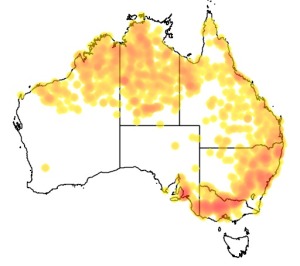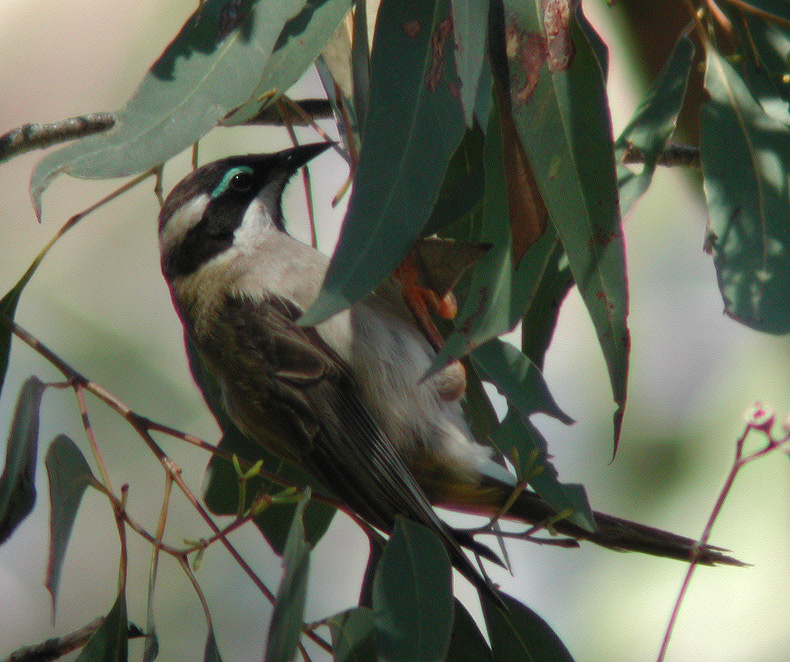Colours
Distinguishing features
It is olive brown above and buff below, with a black head, nape and throat, with a bluish patch of bare skin over the eye and a white crescent-shaped patch on the nape. The legs and feet are orange. Juveniles have an all-over browner plumage. It makes a scratchy creep-creep-creep call, as well as a more musical one. (Wikipedia)
Size
- From 14 cm to 17 cm (Length of specimen)
Wingspan
- Wingspan data is not yet available.
Synonyms
Distribution

©Atlas of Living Australia: Australian distribution: Black-chinned Honeyeater (Melithreptus (Melithreptus) gularis)
Distribution and habitat preferences
It is endemic to Australia. The range is across northern Australia, from northwest Western Australia from the Kimberley, Pilbara, Great Sandy and northern Gibson Deserts, the Top End and the Gulf Country and Cape York of Queensland, through central and eastern Queensland and into central New South Wales. It occurs east of the Great Divide in the Northern Rivers region but is rare further south and appears to have declined in the Sydney region. It is found across central and northern Victoria and into eastern South Australia.
It lives in open woodland and dry sclerophyll forest, often near watercourses. (Wikipedia)
Diet
Insects form the bulk of the diet. It forages by probing in bark of trunks and branches of trees. (Wikipedia)



